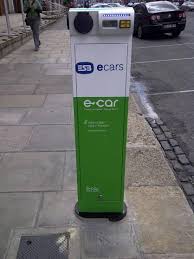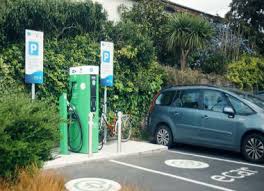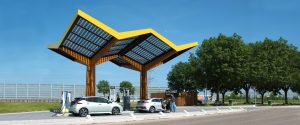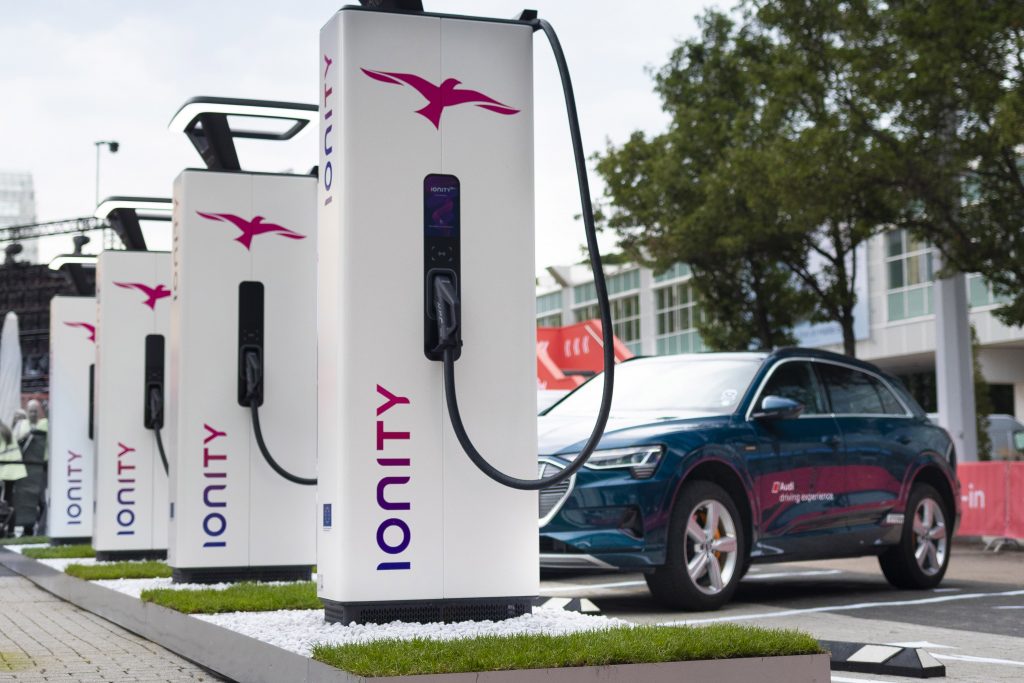 A motion was put to Policy Council in October 2019: “ In view of the Government objective of having 10% of all vehicles in Ireland being zero emission vehicles by 2020 it is proposed that all new public buildings should be required to install free to use electric charging points, with a minimum of 4 parking spaces with two charge points with dual connectors. This applies to all new schools, primary healthcare centres, leisure centres, museums, post offices, garda stations, etc”
A motion was put to Policy Council in October 2019: “ In view of the Government objective of having 10% of all vehicles in Ireland being zero emission vehicles by 2020 it is proposed that all new public buildings should be required to install free to use electric charging points, with a minimum of 4 parking spaces with two charge points with dual connectors. This applies to all new schools, primary healthcare centres, leisure centres, museums, post offices, garda stations, etc”
 I felt this motion neither ambitious or radical enough. Whether 10% EVs by 2020 or 50% EVs by 2030 (Page 88, Climate Action Plan 2019), Ireland’s EV infastructure is woefully behind current demand let alone future demand, apart from the barely adequate infastructure in the Dublin commuter belt, and Cork, Galway and Belfast travel corridors . To meet the Fine Gael 2030 target means selling 100,000 electric cars (EV) every year from 2019 to achieve the trickle-down effect of 50% EV ownership by 2030, an impossible target without the infastructure. Reading the Green Party transport policy, widespread ownership of EVs will be required in the short-term, especially in low density population areas in central and western areas, with several rapid 50 kWh+ EV chargers in every population centre. Slow charging points (3.5 to 22 kWh) are too slow for public use, encouraging all-day blockers. EV owners need a charge as fast as a coffee, burger or comfort break.
I felt this motion neither ambitious or radical enough. Whether 10% EVs by 2020 or 50% EVs by 2030 (Page 88, Climate Action Plan 2019), Ireland’s EV infastructure is woefully behind current demand let alone future demand, apart from the barely adequate infastructure in the Dublin commuter belt, and Cork, Galway and Belfast travel corridors . To meet the Fine Gael 2030 target means selling 100,000 electric cars (EV) every year from 2019 to achieve the trickle-down effect of 50% EV ownership by 2030, an impossible target without the infastructure. Reading the Green Party transport policy, widespread ownership of EVs will be required in the short-term, especially in low density population areas in central and western areas, with several rapid 50 kWh+ EV chargers in every population centre. Slow charging points (3.5 to 22 kWh) are too slow for public use, encouraging all-day blockers. EV owners need a charge as fast as a coffee, burger or comfort break.
 Green Party Transport policy principles:
Green Party Transport policy principles:
Firstly we want to create urban, suburban and rural places that are not dominated by cars. Our policy emphasises public transport for public good; shared transport methods use less energy than individual cars or other vehicles and improve the well-being of commuters. We pay particular attention to the fact that not everyone in our society who wishes to work can afford a private car, and children and many people with disabilities are often excluded. The availability of public transport for activities not connected with work also serves to improve social cohesion. Secondly , commuting needs to be improved, and cities developed in ways that reduce long journeys: our transport policy needs to be linked with planning strategy, so that more people can live closer to their work, or can commute in a reasonable amount of time.
At present, all of Ireland’s oil is imported. Oil imports cost an estimated €4.4 billion in 2014, 77% of the total cost of energy imports (SEAI). The Green Party policy is to phase out fossil fuels, switch public services (buses, coaches and trains) to electrical energy, and eventually run all our transport (cars & trucks, buses & trains), while reducing demand through ‘joined-up’ planning, on domestic wind, water and solar energy, saving Ireland over €4 billion annually. Win Win or What?
When you’re shopping for a fossil-fueled car, you pay attention to distance per litre or mpg. For plug-in vehicles, energy consumption is measured in kilowatt-hours per 100 kilometres/miles (kWh/100 km/miles), such as 15 kWh per 100 km. Fossils need petrol pumps, range is based on size of fuel tank and location of pumps. EVs need EV battery-chargers, range is based on size of battery & speed of chargers. Energy is stored in the battery as DC, low-speed (1-22 kWh) pumps deliver AC energy which the cars’ on-board converter converts to DC, so it is slow, hours or overnight home chargers. A fast, rapid or High Performance (HPC) (50-350 kWh) pump delivers energy as DC so it goes straight to battery, meaning quicker with less time stopped, maybe time for a coffee, burger or comfort break. The quickest HPC pumps, with suitable cars, provide a charge to 80% in minutes; over 80%, all pumps slow to avoid damaging the battery. Time is Money!

My view is that a switch to replace fossil-fueled vehicles with electric/ hydrogen-fueled vehicles on a one-to-one basis is not required. The global trend is that urban dwellers will use public transport (trains, light-rail, buses), EV taxis or rent E-vehicles by the hour/day. All private vehicles will be restricted in town centres. Multible EV charging points on inter-city routes and in rural towns will accommodate those requiring transport. Rather than copy reports I suggest browsers read the Dutch company Fastned investment prospectus, especially Chapter 6 The Market, pages 51-62. https://cdn.fastnedcharging.com/uploads/documents/fastned-eur-15.000.000-bond-programme.pdf

